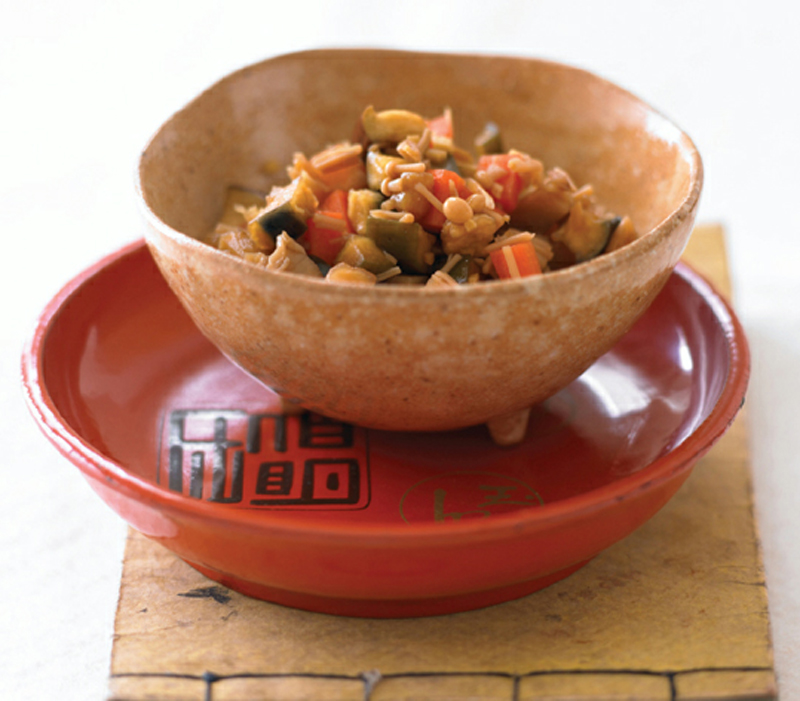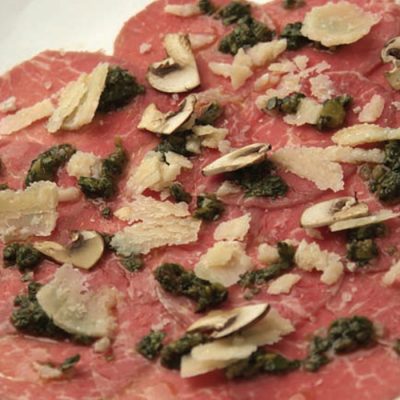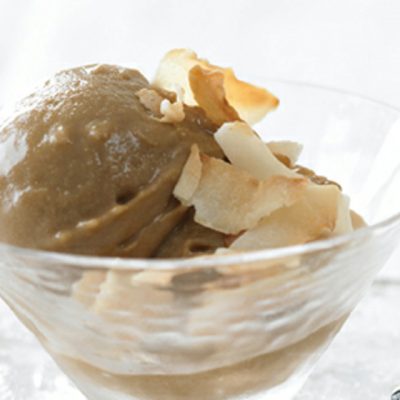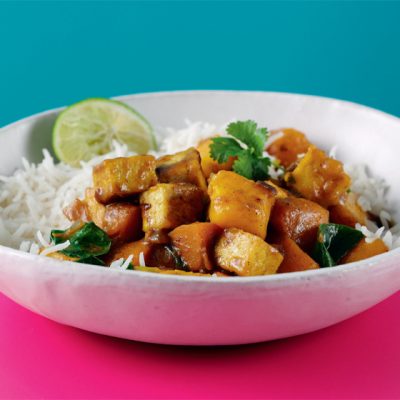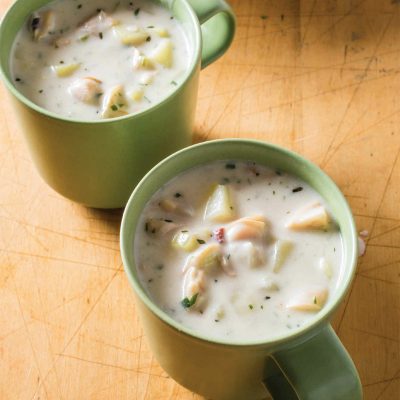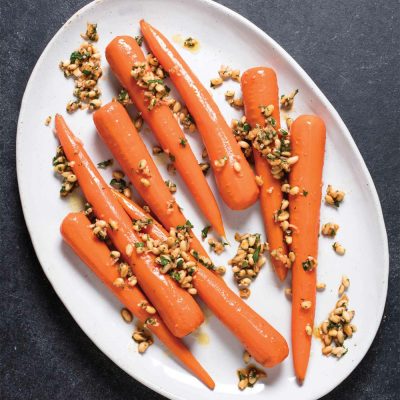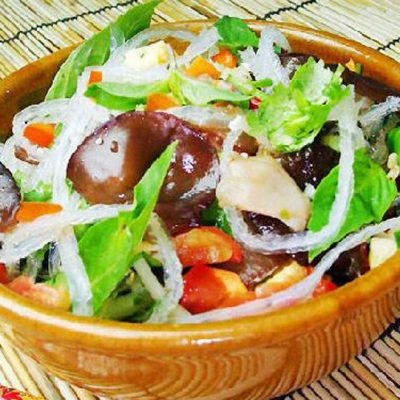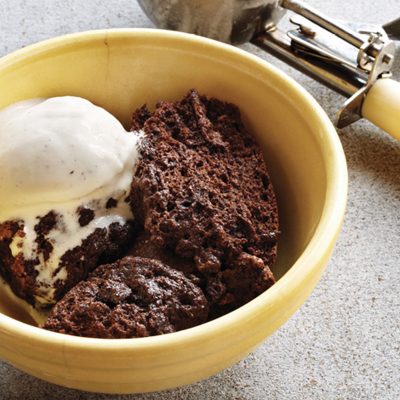Ingredients
-
Brine
-
3 cups Water
-
2 teaspoons Kosher Salt
-
1 chunk Daikon
-
½ Carrots
-
2 small Kirby
-
2 ounces Burdock Root
-
1 small knob tender new Ginger
-
1 Japanese Eggplant
-
1 package Enoki Mushrooms
-
Pickling medium
-
⅓ cup Sugar
-
½ cup Soy Sauce
-
3-inch piece Kombu
-
¼ cup Sake
-
1 cup Rice Vinegar
-
1 Togarashi
Directions
Named after the Seven Gods of Good Fortune, Shichi Fukujin, this pickle combines assorted chopped vegetables with ginger and either dried red chiles (tōgarashi) or peppercorns. The pickling medium, a balanced blend of vinegar, sugar, and soy sauce, provides depth of flavor, and a bit of kombu heightens the overall effect.
As the name suggests, this pickle is typically made with seven ingredients, but in many frugal kitchens this pickle becomes a tasty vehicle for clearing out the vegetable bin. Most versions include radishes, eggplant, and gourds; I have added root vegetables and enoki mushrooms to the mix. It is the traditional accompaniment to curried rice dishes and would be the perfect companion to Skillet-Tossed Curried Rice. Finely minced and tossed into cooked rice, it becomes a tasty filling for rice “sandwiches” (see Hand-Pressed Rice with Fillings). Or, wrapped in crisp lettuce leaves it makes a delightful salad substitute.
Steps
|
1
Done
|
Make the BrineCombine the water and salt in a small saucepan and heat through, stirring, just until the salt dissolves. Remove from the heat and transfer to a widemouthed glass bowl or other nonreactive container. Let cool. |
|
2
Done
|
Place the daikon, carrot, cucumber, burdock root, ginger, and eggplant in the cooled brine and let soak for at least 30 minutes or up to 3 hours at cool room temperature. Because the vegetables tend to bob to the surface, use an otoshi-buta or a flat plate to keep the vegetables submerged in the brine. |
|
3
Done
|
Drain the vegetables, squeezing them gently to rid them of excess moisture. Add the enoki mushrooms to the mixture in the bowl and toss to distribute. |
|
4
Done
|
Make the Pickling MediumCombine the sugar, soy sauce, and kombu in a wide, shallow pot over medium heat and bring to a boil, stirring to dissolve the sugar. Lower the heat to maintain a steady, gentle simmer. Add the vegetables, stir once, and wait until bubbles form around the rim of the pot. Stir again and remove the pot from the heat. Allow the vegetables to cool in the liquid until there is no longer any steam rising. |
|
5
Done
|
Using a slotted spoon, transfer the vegetables to a widemouthed 1-quart Mason-type jar, arranging the kombu on top of the vegetables. |
|
6
Done
|
Add the saké, vinegar, and tōgarashi to the liquid remaining in the pot and bring to a boil over high heat. Lower the heat to maintain a steady, vigorous simmer and simmer for 3 to 4 minutes, or until reduced by half. Skim away any clouds of froth with a fine-mesh skimmer. Remove from the heat and let cool to room temperature. |
|
7
Done
|
Pour the cooled liquid over the vegetables. When the jar no longer feels warm to the touch, secure the lid, label and date the jar, and refrigerate it. The pickles will develop flavor slowly during the first week. After 4 or 5 days, open the jar and, with clean chopsticks or a fork, pull out a sample and taste. If the flavor is too intense, add 2 or 3 tablespoons cold water to the pickling liquid, re-cover, and refrigerate for about 2 more days. |
|
8
Done
|
The pickle will taste best 1 to 2 weeks after assembling, but it can be enjoyed for 4 to 5 weeks if kept refrigerated throughout. Flavors will continue to intensify, however, and you may wish to dilute the pickling liquid after a couple of weeks. |
|
9
Done
|
When ready to serve, select an assortment of chunks, draining only the amount you wish to use at that time. Briefly rinse the pieces under cold running water and squeeze out excess moisture. Mince the pickled vegetables, then gently squeeze the pile to form a low-rising mound. |
|
10
Done
|
Do not reuse either the brine or the pickling medium; assemble with fresh ingredients each time you wish to make a batch of Good Fortune Pickles. |

